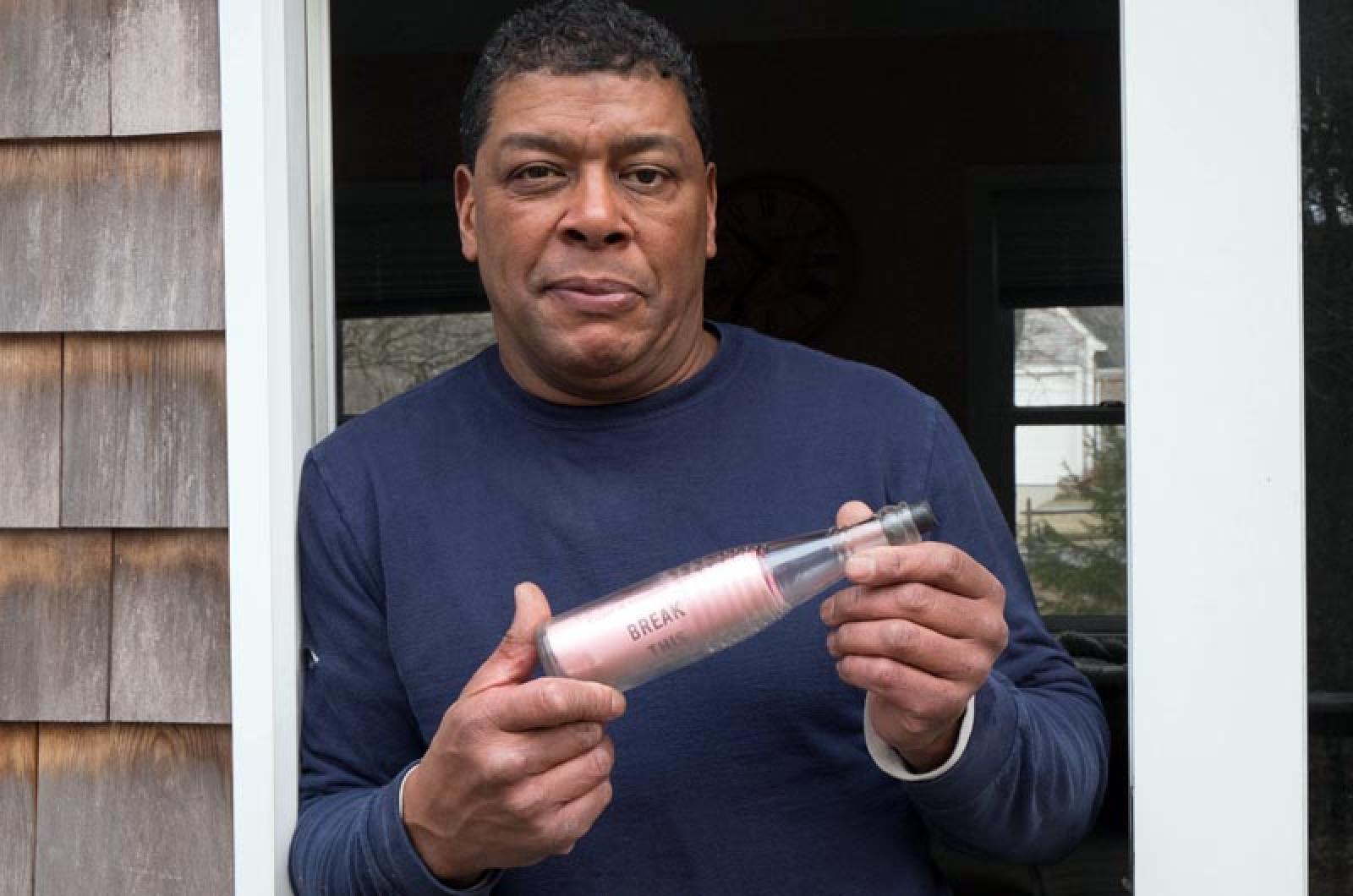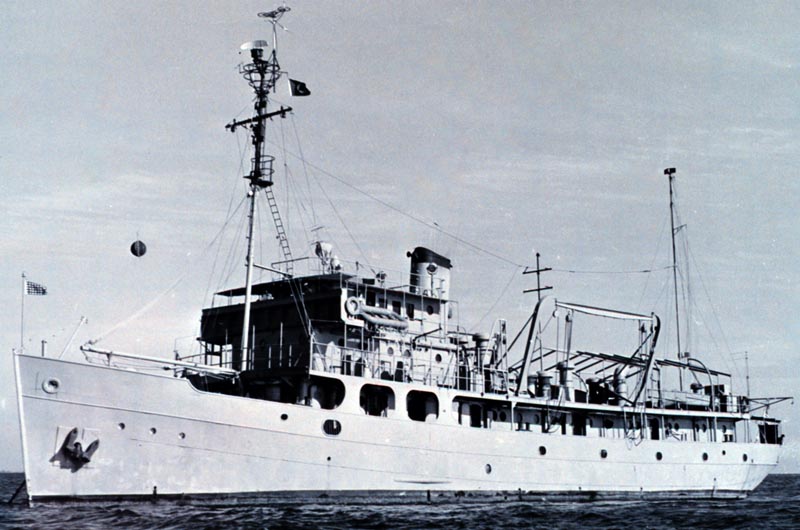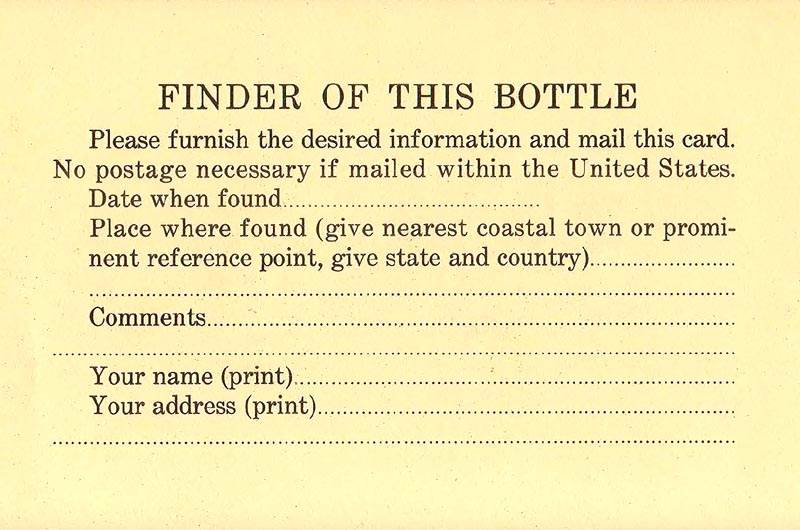A message in a bottle, with a story going back nearly 55 years, has surfaced.
Keith Moreis of Oak Bluffs was out walking on Long Point Beach on a bitter cold December afternoon when he found a small bottle in a clump of seaweed. Though Mr. Moreis could see a message printed on the bottle that said “break this bottle,” he chose another way to find out what was inside.
“I used a corkscrew,” he said.
Inside was a message on faint red paper asking that the contents of the bottle be sent to a Washington, D.C., address that was suspiciously old.
“It didn’t have a zip code,” Mr. Moreis said.
He decided to keep the bottle with his collection of other interesting beach finds. But when he heard in February that someone in Canada had also uncovered an old drift bottle, he decided to do some research. On Feb. 20 he took the bottle to Woods Hole, first to the Woods Hole Oceanographic Institution, and later to the National Oceanographic Atmosphere Administration Northeast Fisheries Science Center.
With the help of staff at the science center, the source and history of the bottle became clear.
Shelley Dawicki, a spokesman for the center, said with significant digging in the files they were able to determine that the bottle was released in the fall of 1959 from the U.S. Coast and Geodetic Survey Ship Hydrographer. According to records, the vessel did environmental studies in three areas off the New England Coast, and one was south of Noman’s Land, or 36 miles south of Aquinnah.
Dropping message bottles was an early way to understand ocean currents.
Jim Manning, an oceanographer at the Woods Hole Laboratory at NOAA’s Northeast Fisheries Science Center, said: “I am always amazed by the information we derive from these bottles. They did well in those days and drew up the maps that we are still using today.”
Researchers have since embraced newer technology to study currents but Mr. Manning said they still use drop bottles, too. In fact, there was a bottle drop last fall south of the Vineyard, Mr. Manning said.
“You hear bottle stories here and there, but this was the longest I’ve heard,” Mr. Manning said, referring to Mr. Moreis’ find. “It was probably buried in the sand. I bet there are many more in the sand.”








Comments (2)
Comments
Comment policy »